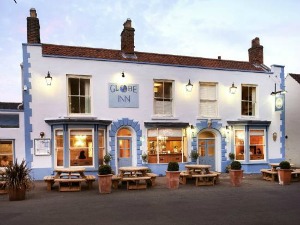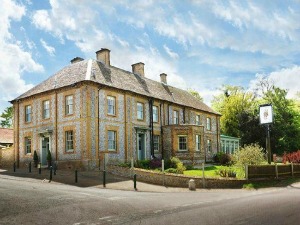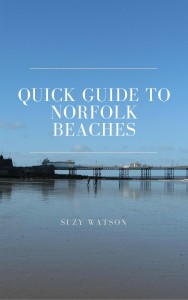- Explore Norfolk
- Towns and Villages
- Wells-next-the-Sea
Wells next the Sea Norfolk
Wells next the Sea, North Norfolk, is one of those coastal towns that could bypass you as being too touristy, but as you drive along the quayside and delve a little deeper into the back alleys and greens of the town you’ll find
- history
- beautiful vistas across the harbour
- historical houses
- one of the best beaches in Norfolk
- plentiful places to eat, most being dog friendly too
- a working fishing port
- crabbing from the quayside
- independent shops
- birdwatching nearby
- walks and walking the Norfolk Coast Path National Trail
- lots of accommodation choices
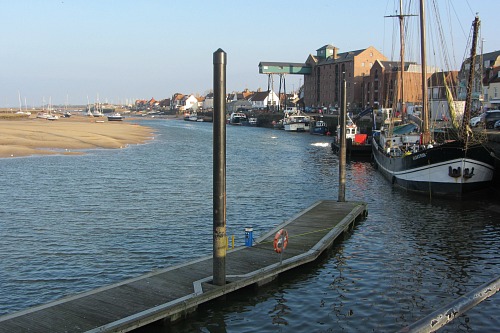
Wells next the Sea Norfolk
Wells acquired its name from the countless spring wells that were found in the area many centuries ago. However, quite where these springs are today I know not! Back in the 19th century, it started to become known as Wells-next-the-Sea in order to distinguish it from other similar place names, and this name was eventually voted and finally adopted as the official name for the town.
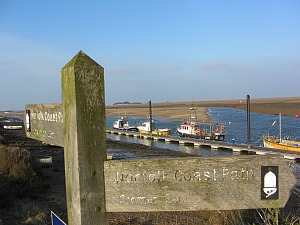
And as with numerous coastal towns and villages on the North Norfolk coast (Cley-next-the-Sea being another good example), the coastal landscape became badly silted up over the years, thus producing a harbour or salt marshes and creeks rather than the sea.
Interestingly, the Holkham Estate (next door to Wells) reclaimed about 800 hectares back in 1895 including building the sea wall in Wells which is one of the ways you can reach the beach today. This sea wall also forms part of the Norfolk Coast Path which gives you ample opportunity to have some wonderful walks along this glorious coastline.
And if you don’t know Wells, you may not know that the beach is in fact a mile away from the town.
But this won’t cause any problems to you as there are various ways of reaching it from the town. You can either drive to the beach car park, walk along the sea wall, or you can take the electric bus.
But what you do have, due to this silting, is a beautiful harbour. And on a sunny day, when the sea is dead calm, the views you have of the sailing boats silhouetted on the water is a truly blissful sight.
Or if the tide is out, the boats are tilting on the sand waiting patiently for the water to rise! It’s a very serene picture.
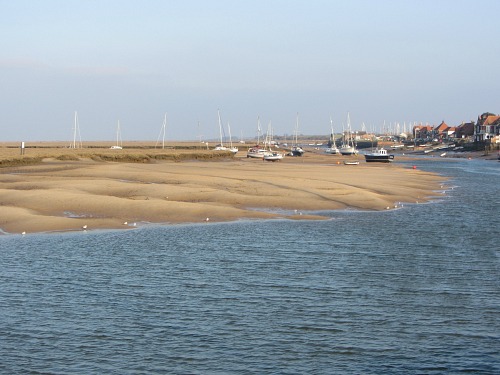
Wells Beach
What can I say about this beach? It’s fantastic! With swathes of golden sand, huge skies, very dog friendly and with an incredibly long row of beautifully decorated and aptly named beach huts, this has to be one of the best beaches on the North Norfolk Coast. You can read much more about Wells beach here If you have children, this is one of the best beaches to come to and where you will probably spend most of your time.
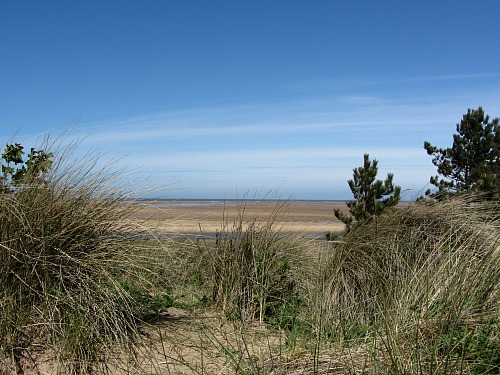
Places to eat in Wells-next-the-Sea
Wells-next-the-Sea Norfolk is not short of places to eat! There are masses of places, ranging from fish and chip shops, to tea rooms and cafes, to deli’s to pubs. On the harbour, there is French’s fish and chip shop which you can take out and eat on the harbour wall watching the world go by, or eat inside if it’s too cold. There is also a Deli on the harbour as well as ice cream shops and the obligatory Rock shop!
If you head up Staithe Street you’ll come across some tea rooms, and if you walk up to the Buttlands, there are two gastro pubs, The Crown and The Globe, both very relaxed. Going slightly further south into Wells, opposite the church is The Bowling Inn which is said to be the oldest building in Wells. All you need to do is wander around and you’ll find somewhere that will suit you, you’ll be spoilt for choice.
Wells as a fishing port
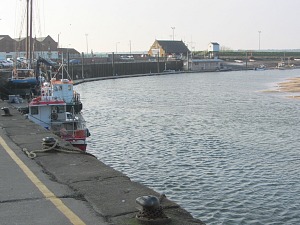
Wells next the Sea Norfolk is still very much a working fishing port, a bit like the seaside town of Cromer further along the coast, which is also a working fishing town. The difference between these two towns is that Wells has a harbour, Cromer does not. So the fishermen at Cromer have to bring their boats in on tractors pulling them up out of the water rather than alighting at the harbour wall.
You’ll catch sight of lobster pots, buoys and fish trays on the harbour wall.
Crabbing from the harbour wall is also a very popular activity in the summer months, and what better way to while away a few hours by crabbing and sitting on the harbour wall whilst eating your fish and chips!
Historical Wells
The historical architecture of Wells is very easy to miss if you don’t explore the town a little bit. Wells is surrounded by historical houses, a few of them visible from the harbour.
The Merchant House in Freeman Street is one such example. Some of the building dates back to the 1500’s, others to the 18th and 19th centuries and is one of the oldest houses in Wells.
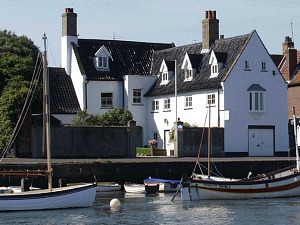
As you walk along East Quay, heading out of Wells along the Norfolk Coast Path, another ancient house that you’ll spot on the right hand side is the Old Custom House. This historic house was built in 1560 and served as a Custom House until about 1910. I believe it is even mentioned in Samuel Pepys Diary. Both the Merchant House and the Old Custom House are now bed and breakfast accommodation, so if you’re looking for an historical slant for your stay, then these are perfect places to use.
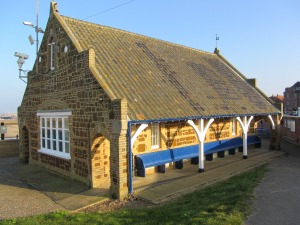
The Old Lifeboat House, situated right on the Harbour, is also another historical building that was built in 1869 and is only one of three left in the country of this particular design. It’s built using carrstone, which is the red sandstone found in the cliffs at Hunstanton. This building is now used for the Harbour Master. However, because this lifeboat station was too far from the sea and on occasions had difficulty getting out of the harbour, a new lifeboat station was built at the entrance to the harbour, which you can see today when you head towards the beach. This houses the all-weather lifeboat, similar to one of the lifeboats in Cromer.
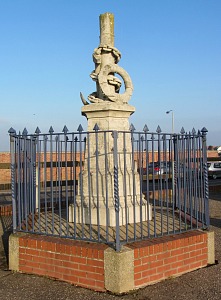
Outside this Old Lifeboat House, on the other side of the road, is a poignant memorial to the 11 crew who lost their lives in action in 1880. You can read more about their story here
The one building that really sticks out though, and you just can’t miss it, is the large Granary with its impressive gantry overlay. It was built in 1903 and was used to store grain when Wells-next-the-Sea was a thriving port. Now, however it contains luxury flats.
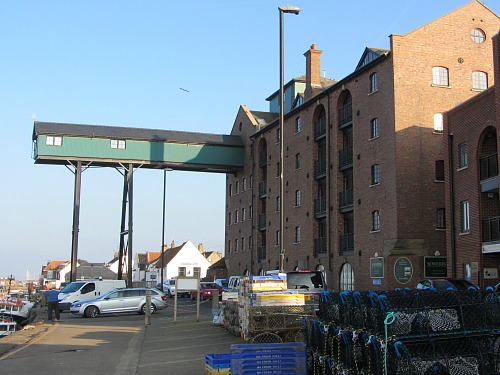
Staithe Street is another one of those old fashioned streets which is tiny and narrow but full of interesting independent shops and tea rooms. This is now the main area for shops to be found.
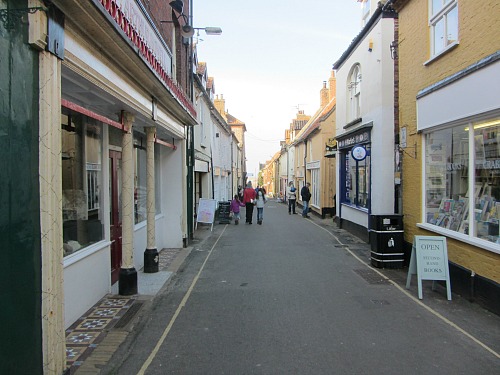 Staithe Street, Wells-next-the-Sea
Staithe Street, Wells-next-the-SeaBut just up from Staithe Street is the Buttlands, and lovely village green lined with trees and surrounded by Georgian houses. This is just a short walk away from the main streets of Wells and feels like a completely different town. In fact it doesn’t feel like a town at all, you’re almost detached from the hustle and bustle. Here though can be found two very good gastro pubs, The Crown and The Globe. Both are very dog friendly and have very relaxed atmospheres. The Buttlands is where you can begin to imagine what Wells must have been like in the days of horse and carriage.
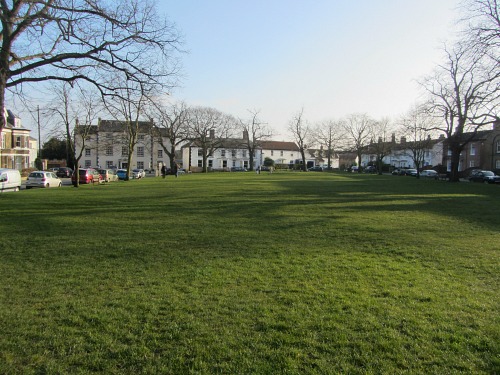
Walking and Bird Watching
Wells and the surrounding areas are fantastic for both walking, birdwatching and exploring nature. Because it’s right in the middle of the North Norfolk Coast, you have the whole of the Norfolk Coast Path which provides ample walks going both east and west of the town. If you walk west, you can walk for miles along the beautiful sandy beaches of Wells, Holkham and Burnham Overy Staithe , and if you walk east, starting from East Quay, you can walk along the very pretty salt marshes towards Stiffkey, Morston and Blakeney.
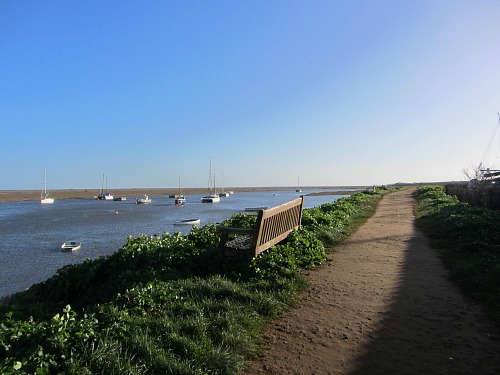 Norfolk Coast Path heading East towards Stiffkey
Norfolk Coast Path heading East towards StiffkeyAnd I can’t talk about Wells next the Sea Norfolk without mentioning Holkham Hall. This splendid palladian mansion is about 5 minutes away in the car and is a must see. You can spend the whole day just walking and wandering around the grounds without even going into the house. It’s a beautiful place to visit.
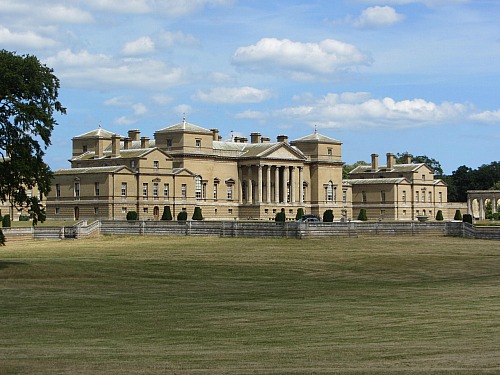
And for birdwatching, you’re spoilt for choice. One the east side of Wells you can get to the Norfolk Wildlife Trust’s Cley Marshes, and on the west, you have the RSPB site of Titchwell. Both of these sites are two of the best bird watching sites in the UK. But even closer to home is the Holkham Nature Reserve which actually covers ground from Burnham Overy Staithe to Blakeney. But for bird watching closer to Wells, just along from Lady Anne’s Drive you can join many birders who come to watch the pink footed geese in the evening dusk, and where you’ll find a bird hide to watch many of the birds on the grazing marshes landward from the sea and pine woods.
And don't forget that any place that you wish to visit along the North Norfolk coast can always be got to by taking the Sanders Coasthopper bus CH1 which runs along the Norfolk Coast road.
Accommodation in Wells next the Sea
There are so many places to stay in Wells that it’s hard to choose what to put up here. Below are three suggestions for comfortable and very relaxed pubs/hotels in and very close to Wells. You can see a bit more on dog friendly accommodation in Norfolk here



